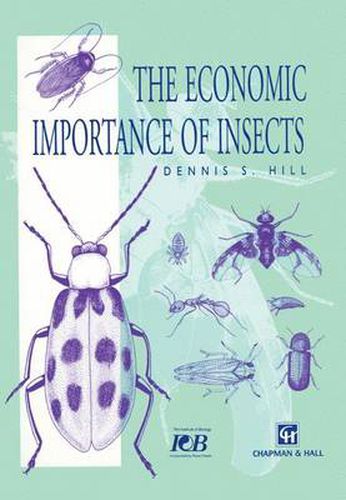Readings Newsletter
Become a Readings Member to make your shopping experience even easier.
Sign in or sign up for free!
You’re not far away from qualifying for FREE standard shipping within Australia
You’ve qualified for FREE standard shipping within Australia
The cart is loading…






This title is printed to order. This book may have been self-published. If so, we cannot guarantee the quality of the content. In the main most books will have gone through the editing process however some may not. We therefore suggest that you be aware of this before ordering this book. If in doubt check either the author or publisher’s details as we are unable to accept any returns unless they are faulty. Please contact us if you have any questions.
In the last few decades there has been an ever-increasing component in most BSc Zoology degree courses of cell biology, physiology and genetics, for spectacular developments have taken place in these fields. Some aspects of biotechnology are now also being included. In order to accommodate the new material, the old zoology courses were altered and the traditional two-year basis of systematics of the animal kingdom, comparative anatomy (and physiology) and evolution, was either severely trimmed or reduced and presented in an abridged form under another title. Soon after these course alterations came the swing to modular teaching in the form of a series of shorter, separate courses, some of which were optional. The entire BSc degree course took on a different appearance and several different basic themes became possible. One major result was that in the great majority of cases taxonomy and systematics were no longer taught and biology students graduated without this basic training. We field biologists did appreciate the rising interest in ecology and environ mental studies, but at the same time lamented the shortage of taxonomic skills, so that often field work was based on incorrect identifications. For years many of us with taxonomic inclinations have been bedevilled by the problem of teaching systematics to undergraduates. At a guess, maybe only 5% of students find systematics interesting. It is, however, the very basis of all studies in biology - the correct identification of the organism concerned and its relationships to others in the community.
$9.00 standard shipping within Australia
FREE standard shipping within Australia for orders over $100.00
Express & International shipping calculated at checkout
This title is printed to order. This book may have been self-published. If so, we cannot guarantee the quality of the content. In the main most books will have gone through the editing process however some may not. We therefore suggest that you be aware of this before ordering this book. If in doubt check either the author or publisher’s details as we are unable to accept any returns unless they are faulty. Please contact us if you have any questions.
In the last few decades there has been an ever-increasing component in most BSc Zoology degree courses of cell biology, physiology and genetics, for spectacular developments have taken place in these fields. Some aspects of biotechnology are now also being included. In order to accommodate the new material, the old zoology courses were altered and the traditional two-year basis of systematics of the animal kingdom, comparative anatomy (and physiology) and evolution, was either severely trimmed or reduced and presented in an abridged form under another title. Soon after these course alterations came the swing to modular teaching in the form of a series of shorter, separate courses, some of which were optional. The entire BSc degree course took on a different appearance and several different basic themes became possible. One major result was that in the great majority of cases taxonomy and systematics were no longer taught and biology students graduated without this basic training. We field biologists did appreciate the rising interest in ecology and environ mental studies, but at the same time lamented the shortage of taxonomic skills, so that often field work was based on incorrect identifications. For years many of us with taxonomic inclinations have been bedevilled by the problem of teaching systematics to undergraduates. At a guess, maybe only 5% of students find systematics interesting. It is, however, the very basis of all studies in biology - the correct identification of the organism concerned and its relationships to others in the community.